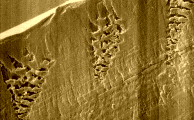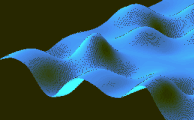
| Physics and Astronomy |
|
| Physics Home | Study here | Our Teaching | Our Research | Our Centres | News | Work here | EMPS |
|
Physics Research
Research groups
See Also
|
||||||||||||||
Back to top
Biomedical Physics Research
Biophysics and Radiation PhysicsBiophysics studies relate to the connective tissues, an apparently diverse family of biological tissues, embracing blood vessels, articular cartilage, skin and the intervertebral disc. The functions of these tissues are essentially physical (shock-absorbers, bearings or selective filters) and there is long-standing evidence that diseases such as arthritis and atherosclerosis are manifestations of, or arise from, impaired physical functions. Our research is concerned with the physical principles underlying the physiological functions of the connective tissues and, in particular, with the physical properties of their constituent macromolecules. Over the last few years we have begun to study the physical interactions between cells and matrix. Our particular interest is in the cytoskeleton that not only provides the cell with the mechanical properties necessary to withstand forces imposed upon it, but also provides a means of sensing the forces and transducing them into appropriate, frequently metabolic, responses. Research in Radiation Physics is concerned with radiation interactions in bulk matter, encompassing energies from as low as those of thermalised neutrons through to those giving rise to photo-nuclear reactions. One area of activity concerns potential diagnostic applications of the elastic photon-atom scattering process, involving diffraction and also anomalous scattering close to atomic absorption edges. Another area concerns the diagnostic capabilities of x-ray fluorescence, focussing on possible relationships between trace element concentrations and ill-health, currently linking to issues concerning beta thalassaemia and the diagnosis of breast disease. In several of these areas of activity we are beginning to make use of synchrotron sources. Control of radiations forms yet another area of involvement. Here new themes are developing, particularly in relation to the thermoluminescent properties of optical fibres. More about:
Biophysics of connective tissues Human PerceptionRecent advances in functional brain imaging and the current interest in human-computer interactions have resulted in increased attention towards the study of perceptual processes. Our research in the physics of human perception focuses on two modalities: touch and hearing. Projects in tactile perception are investigating strategies for the transmission of temporal, spatial and spatio-temporal information to subjects through specific sites on the skin by means of purpose-built stimulator hardware, including tactile arrays which deliver complex stimuli to the fingertip via a close-packed set of vibratory transducers. Applications of this work include sensory substitution for the hearing impaired and virtual environments, where it is now feasible to add touch information to enhance an environment created with visual and auditory signals. A recent auditory perception project, relating to microtonal adjustments in the tuning of musical scales, addresses aspects of pitch perception in short melodic sequences. More about: Tactile Arrays Imaging and MeasurementResearch in Biomedical Optics is concerned primarily with non-invasive oximetry and with laser Doppler flowmetry for the non-invasive measurement of microvascular blood flow. Presently, clinical applications include the monitoring of blood oxygen in the capillary loops of skin prone to venous ulceration, and the dynamic measurement of vasodilatory mechanisms within the microcirculation. In addition, the group has interests in applying these, and related, techniques to studying the ultrastructure of collagen and elastin-based connective tissues. A further interest is the use of near-infrared spectroscopy to study tissue oxygenation, particularly oxygenation in exercising muscle. The work of the group involves extensive collaboration within the school and university as well as with other institutions in the UK. The Magnetic Resonance Imaging (MRI) laboratory has three small-bore imaging systems at a variety of field strengths as well as access to the clinical system at the Royal Devon and Exeter Hospital. MRI is predominantly used in clinical practice as an anatomical visualisation tool. However, this fails to take advantage of the multi-parametric nature of the MR signal which allows quantitative measurements of tissue properties. Research is being carried out to apply quantitative MRI in the study of disease processes as well as in fundamental research into biological materials such as collagen. Specific areas of clinical interest include: knuckle and finger-joint imaging in rheumatoid and osteo-arthritis, body composition analysis, high-resolution imaging to investigate skin hydration, and techniques for quantitative magnetization transfer (MT) imaging in the study of venous leg ulceration. Other projects in physiological measurement relate to the Exeter Dysphagia Assessment Techniques (EDAT) for respiratory-control problems during swallowing in subjects with neurological disorders, and to a range of equine veterinary studies. More about:
Biomedical optics
General InformationPersonnel
Group FacilitiesExperimental facilities include: Three horizontal-bore superconducting magnets for magnetic resonance imaging (bores of 310, 310 and 560 mm). Three magnetic-resonance imaging consoles. Radio-frequency spectrum analyser and other equipment to characterise magnetic resonance signals. Soundproof room for audio recording and for tests of auditory perception. A large number of PCs for data analysis and control of experiments, many fitted with dedicated hardware cards for data capture, signal processing, image display, etc.. Local network for exchange of image data, etc. throughout the group. Patient-handling facilities within the laboratory. Access to clinical facilities, patients and Hospital Physicists at local hospitals. Nuclear medicine facility (gamma camera, etc.) for veterinary measurements Our laboratories are supported by the School's well-staffed and well-equiped Mechanical and Electronics Workshops which are used to undertake tasks ranging from the construction of complete helium dilution refrigerators to microprocessor-controlled monitoring apparatus. The School also runs its own helium and nitrogen liquefiers. See Also
|




